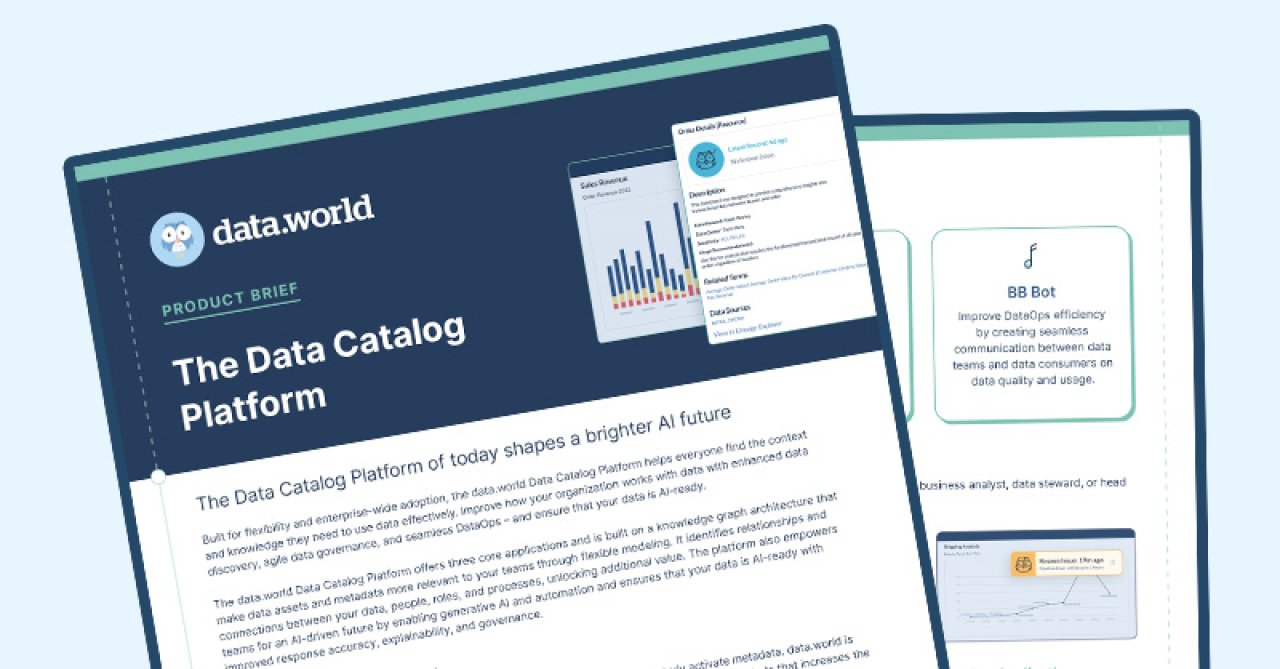







May 01, 2025

Liz Elfman
Content Marketing Director

Effective data governance is not just a compliance checkbox. As data volumes are projected to hit 181 zettabytes by 2025 and the average cost of a data breach reaches $4.45 million, strong governance is critical for both risk reduction and business value. Here are common pitfalls-and how leading organizations are overcoming them.
1. Treating data governance as just compliance
Many firms focus on governance only to meet regulations, missing out on its strategic benefits. In reality, 45% of organizations now see regulatory compliance as a key goal, but the most successful also use governance to enable faster decisions, support AI, and clarify their data landscape.
2. Isolated governance and data catalogs
Governance that isn’t connected to data discovery tools often fails. Companies like Uber and Panasonic have improved outcomes by integrating governance directly with their data catalogs, making policies actionable and visible where users work.
3. Overly complex governance tools
Adoption suffers when tools are hard to use. McGraw-Hill Education boosted engagement by implementing intuitive, cloud-based platforms with features like product tagging and seamless integrations, reducing support requests and improving data quality.
4. Centralized governance without local ownership
Centralized teams often lack domain expertise. Leaders like Unilever and GE Aviation empower business units and domain experts to define and manage governance for their data, improving accuracy and buy-in.
5. Manual processes that can't scale
Manual governance can’t keep up with today’s data volumes. AI-driven automation-such as metadata suggestions and real-time monitoring-helps organizations scale governance and proactively flag issues.
6. Lack of business context.
Governance that ignores business meaning is ineffective. Building business glossaries and linking technical data to business terms.
7. Ignoring data quality
Data quality is the top integrity challenge for 56% of organizations. Embedding quality metrics and ownership into governance frameworks, and monitoring quality in real time, are essential for reliable analytics.
8. Siloed teams
Technical solutions alone aren’t enough. Cross-functional collaboration and clear communication channels-enabled by collaborative tools-are vital for aligning business and IT on governance objectives.
9. Overlooking AI governance
With AI adoption rising, governance must address new risks like bias and explainability. The EU’s upcoming AI Act and similar regulations will require organizations to extend governance to cover AI-specific concerns, including transparency and ethical use.
10. Focusing on tools, not culture.
Technology is only part of the solution. Building a governance culture-through training, celebrating wins, and demonstrating value-ensures lasting adoption and effectiveness.
Final thoughts
Modern data governance balances structure with flexibility, and technology with people. By learning from industry leaders and avoiding these pitfalls, organizations can turn governance into a driver of trust.

Effective data governance is not just a compliance checkbox. As data volumes are projected to hit 181 zettabytes by 2025 and the average cost of a data breach reaches $4.45 million, strong governance is critical for both risk reduction and business value. Here are common pitfalls-and how leading organizations are overcoming them.
1. Treating data governance as just compliance
Many firms focus on governance only to meet regulations, missing out on its strategic benefits. In reality, 45% of organizations now see regulatory compliance as a key goal, but the most successful also use governance to enable faster decisions, support AI, and clarify their data landscape.
2. Isolated governance and data catalogs
Governance that isn’t connected to data discovery tools often fails. Companies like Uber and Panasonic have improved outcomes by integrating governance directly with their data catalogs, making policies actionable and visible where users work.
3. Overly complex governance tools
Adoption suffers when tools are hard to use. McGraw-Hill Education boosted engagement by implementing intuitive, cloud-based platforms with features like product tagging and seamless integrations, reducing support requests and improving data quality.
4. Centralized governance without local ownership
Centralized teams often lack domain expertise. Leaders like Unilever and GE Aviation empower business units and domain experts to define and manage governance for their data, improving accuracy and buy-in.
5. Manual processes that can't scale
Manual governance can’t keep up with today’s data volumes. AI-driven automation-such as metadata suggestions and real-time monitoring-helps organizations scale governance and proactively flag issues.
6. Lack of business context.
Governance that ignores business meaning is ineffective. Building business glossaries and linking technical data to business terms.
7. Ignoring data quality
Data quality is the top integrity challenge for 56% of organizations. Embedding quality metrics and ownership into governance frameworks, and monitoring quality in real time, are essential for reliable analytics.
8. Siloed teams
Technical solutions alone aren’t enough. Cross-functional collaboration and clear communication channels-enabled by collaborative tools-are vital for aligning business and IT on governance objectives.
9. Overlooking AI governance
With AI adoption rising, governance must address new risks like bias and explainability. The EU’s upcoming AI Act and similar regulations will require organizations to extend governance to cover AI-specific concerns, including transparency and ethical use.
10. Focusing on tools, not culture.
Technology is only part of the solution. Building a governance culture-through training, celebrating wins, and demonstrating value-ensures lasting adoption and effectiveness.
Final thoughts
Modern data governance balances structure with flexibility, and technology with people. By learning from industry leaders and avoiding these pitfalls, organizations can turn governance into a driver of trust.